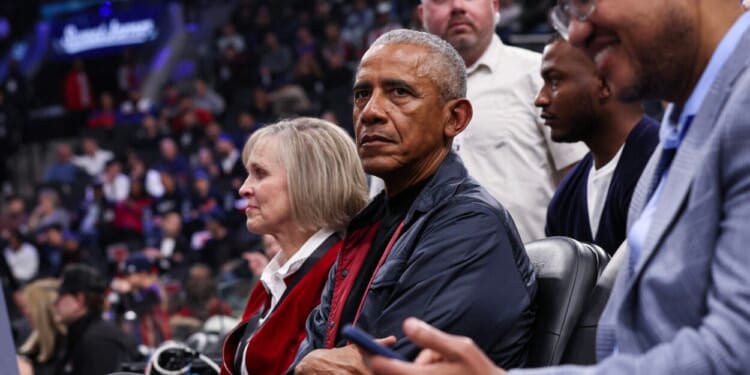Virginia’s and New Jersey’s gubernatorial races show the Republican candidates currently matching or beating Donald Trump’s past presidential margins. This is big for these state races and for gauging the overall country’s mood. It could be bigger still if it presages a Republican threat to Democrats’ “second blue wall” in 2026 and 2028.
In Virginia, the Republican, Lt. Gov. Winsome Earle-Sears, has been trailing the Democrat, former Rep. Abigail Spanberger, by double digits as recently as the beginning of October. Before Republican Glenn Youngkin upset Democrat Terry McAuliffe’s bid for a second term in 2021, four of Virginia’s previous five governors had been Democrats. No Republican presidential candidate has won Virginia since 2004.
In New Jersey, the Republican, former state Rep. Jack Ciattarelli, has been trailing the Democrat, former Rep. Mikie Sherrill, by double digits as recently as the beginning of September. In presidential elections, no Republican has won New Jersey since 1988.
Reasonable expectations would consider both states comfortable for Democrats in this year’s gubernatorial races: Neither state has been won by a Republican presidential candidate in over 20 years; this year’s Democrat gubernatorial candidates hold sizable leads; and off-year elections historically go against the party holding the presidency.
However, polls have shown both races tightening dramatically in their final weeks.
Averaging the polls in RealClearPolitics’ list of gubernatorial races since mid-October, we get Democrat Spanberger with just a 6.9 percentage point lead in Virginia, and Democrat Sherrill with a 4.6 percentage point lead in New Jersey. Democrats’ leads have been cut roughly in half in New Jersey and sharply reduced in Virginia.
While noteworthy on their own, these results are even more so when you look at how Trump performed in these states. Over the last three presidential elections, Trump lost Virginia by an average of 6.9 percentage points. In 2024, Trump lost New Jersey by 5.9 percentage points; over the last three presidential elections, he lost New Jersey by an average of 11.6 percentage points.
In Virginia, Earle-Sears is matching Trump’s average over the last three presidential elections. In New Jersey, Ciattarelli is running ahead of Trump’s 2024 margin and at less than half of Trump’s three-election deficit average there.
This is remarkable for several reasons. For one, while much is made of Trump’s job approval being negative (45.3%-51.7% in RealClearPolitics’ 10/23 national polling average), Trump’s favorability rating is higher at -8.3% than either the Republican Party’s (-12%) or the Democrat Party’s (-24.3%). Yet Republicans’ Virginia and New Jersey gubernatorial candidates appear to be matching or outperforming them all.
Democrats will excuse their gubernatorial candidates’ weakening positions on local issues that are sapping momentum late in these races. In Virginia, Spanberger is being hurt by fallout from the revelation of Democrat attorney general nominee Jay Jones’ violent texting and reckless driving conviction. In New Jersey, Sherrill has been hurt by her involvement in a cheating scandal while she was at the U.S. Naval Academy.
Yet Trump, as Democrats constantly point out, is also a divisive figure who fails to rally all his base or appeal to moderates. In 2024, exit polling showed Trump losing 9% of conservatives and 58% of moderates. In other words, if the Democrat gubernatorial candidates are performing below the party’s potential, Trump too has also performed below his apparent potential.
Looking to the 2026 and 2028 elections, there is a lot to glean from Republicans’ closing performances in Virginia and New Jersey. Both states are in the “second blue wall,” those states Democrats depend on to be presidentially competitive, but which Harris won by 10 percentage points or less (Maine, New Hampshire, New Jersey, Virginia, Minnesota, and New Mexico: 50 electoral votes). Without these states and the seven swing states Harris lost in 2024, Democrats become irrelevant in presidential contests.
Republicans are holding their own in the two biggest electoral vote states in this “second blue wall.” They are doing so without Trump on the ballot (which helps them), yet with him in the White House (which hurts them).
If Republicans are now matching or outperforming what Trump did in 2024 in these six states, it bodes well for them holding control of Congress in 2026. This would deny Democrats a platform for attacking Trump during his term’s last two years, something they vigorously did after the 2018 midterms. It bodes even better for Republicans’ chances in 2028 and for their nominee outperforming Trump, cementing control of the seven swing states and breaking into Democrats’ “second blue wall.”
Originally published by RealClearPolitics
We publish a variety of perspectives. Nothing written here is to be construed as representing the views of The Daily Signal.








